Sometimes a company pushes forward with an idea that seems good at the time but in hindsight, makes most people cringe (New Coke comes to mind here). Sometimes, however, a good idea comes along at the wrong time and never gets a chance to really 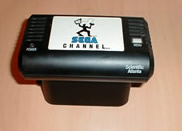 show its stuff. In the gaming industry, we see this a lot and these ideas are usually capitalized upon in later hardware generations. The Sega Channel was one such idea, coming to gamers late in the Genesis’ life cycle and offering a glimmer of what would eventually become, together with another innovative idea called the Xband, the modern online gaming services that both Xbox and PlayStation 2 gamers would embrace and make a solid reality. In fact, the entire concept behind the Sega Channel was not unlike the current set ups by companies like iTunes and Napster, where you are offered part of the product for a price, in order to entice you to buy the entire thing.
show its stuff. In the gaming industry, we see this a lot and these ideas are usually capitalized upon in later hardware generations. The Sega Channel was one such idea, coming to gamers late in the Genesis’ life cycle and offering a glimmer of what would eventually become, together with another innovative idea called the Xband, the modern online gaming services that both Xbox and PlayStation 2 gamers would embrace and make a solid reality. In fact, the entire concept behind the Sega Channel was not unlike the current set ups by companies like iTunes and Napster, where you are offered part of the product for a price, in order to entice you to buy the entire thing.
Capitalizing on the market strength of the Genesis console, the Sega Channel seemed to be a no-brainer for Sega. Millions of gamers were expected to come flocking to not only the service but the console as well, giving the House of Hedgehog a steady stream of new users with which to further cement and expand their market share.
Putting your Best Foot Forward
The Sega Channel was a premium service started by Sega, Telecommunications Inc. (the world’s largest cable company at the time), and Time Warner (the world’s largest media company). It was initially tested in twelve cities in June of 1993, and the national rollout began that December. The basic premise was to allow gamers to download, via a special cartridge, up to fifty games a month to try out. It was Sega’s hope that by testing the games in the comfort of your own home, you would want to go out and purchase the complete title. For a modest $12.95 a month (depending on your location), gamers could download games, tips, and news; as well as preview upcoming titles. Games offered unlimited play time, only disappearing when the Genesis console was powered off. They ran the same as they did in cartridge form, with codes, peripheral support, and multi-player capability. About 75% of the titles offered changed each month so that as many games in the Genesis’ library (about five hundred at the time) as possible would be available for play.
This is how it worked: You would insert the modem cartridge (which strangely enough, looked a lot like the 32X) into the system. It was compatible with both the model 1 and 2 Genesis consoles (CDX?) and would interface with your cable line via a coaxial output at the rear of the unit. You would then connect to the service and access the main menu screen, where you could make your selection. The signal originated from Denver, CO and was carried over the Galaxy 7 satellite to cable providers. It uploaded at 1.435 GHz and downloaded at 1.1 GHz, which wasn’t bad at all for the time.
According to the June/July issue of Sega Visions Magazine:
A menu on the TV screen will allow you to select any game, preview or other program material. Your selected games is available in minutes, and plays just like the cartridge version. As long as your unit is turned on, you’ll have unlimited play of the game of your choice. Now you’ll be able to “preview” games in your library before spending your hard-earned allowance on the packaged version.
Sounds pretty nifty, huh? It was. There had never really been anything like it and from the looks of things, it was exactly what gamers wanted. Though the titles available changed monthly, static categories were used to make choosing a title as easy as possible. You had:
Test Drives: Allowed you to sneak a peek at the newest, hottest titles before they hit stores. Each preview was fully playable, though limited to a certain number of levels or a certain amount of time.
Sports Arena: Titles from tennis to football to wrestling and pool could be played.
The Arcade: Fast and furious action titles that would challenge the hardiest thumb twitcher.
Swords & Spells: Deep, dangerous RPGs that centered on character development and magical surroundings.
Wings & Wheels: The fastest, most realistic driving and flying sims.
The Think Tank: Puzzle and strategy games that challenged every level of gamer.
The Family Room: Fun games for the entire family, featuring your favorite characters from movies and television.
Classics: Some of those outstanding Genesis titles you’d been meaning to try.
The Test Drive section was particularly interesting, as many titles which were never released in the U.S. were playable here. Mega Man: The Wily Wars and Pulseman were a few of the great imports you could play over the Sega Channel that never saw the light of day in America.
Being family-oriented, the service used the same rating system featured on Sega titles of the time (the Video Game Rating Council) so that parents would know what to watch out for. Moreover, to keep younger gamers from accessing inappropriate content, parents could use a four digit password that would lock out certain games. They could choose their code, as well as which ratings could be accessed with or without it.
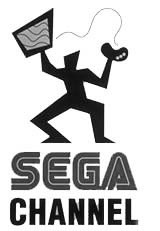 In addition to exclusive import games, the Sega Channel offered special promotions which subscribers ate up enthusiastically. In 1995, for instance, Sega and Time Warner Interactive ran a promotion featuring Primal Rage. From August first through the twenty-fourth, a limited version was available for download before the retail version shipped on the twenty-fifth. On that day, the full version was made playable for twenty-four hours. Gamers who played all the way through could access a special code and an 800 number that made them eligible to win prizes. An estimated 24% of the Sega Channel’s subscribers participated in the event. This followed a successful promotion that had been offered in conjunction with Electronic Arts for Triple Play ’96 in which 10,000 subscribers took part.
In addition to exclusive import games, the Sega Channel offered special promotions which subscribers ate up enthusiastically. In 1995, for instance, Sega and Time Warner Interactive ran a promotion featuring Primal Rage. From August first through the twenty-fourth, a limited version was available for download before the retail version shipped on the twenty-fifth. On that day, the full version was made playable for twenty-four hours. Gamers who played all the way through could access a special code and an 800 number that made them eligible to win prizes. An estimated 24% of the Sega Channel’s subscribers participated in the event. This followed a successful promotion that had been offered in conjunction with Electronic Arts for Triple Play ’96 in which 10,000 subscribers took part.
Sega appeared to have all the bases covered. They had the best technical set up available, an easy and established point of entry through which they could pump hundreds of titles to keep gamers occupied for months at a time, and the brand name recognition of the lead console in 16-bit gaming. A huge marketing push was given to the new service, which had proven quite successful in test markets, and it appeared to pay off. It was voted one of 1994’s most innovative products by Popular Science Magazine. Moreover, an August 1995 Omnibus survey by Sports Illustrated found that most kids between ages 9-13 were five times as likely to subscribe to the Sega Channel than to purchase the Saturn, N64, or Atari Jaguar. Only one in twenty said they would rather buy the Sony PlayStation!
Nothing, it seemed, could go wrong. Sadly, this was not the case.
Service with a Smile… but No Takers
While one can be quick to point out that perhaps the price point was a bit too much (it was about the same price per month as Cinemax but without the sex) or that the market just wasn’t technologically ready for such a service, what did the Sega Channel in was most probably poor timing. It was unveiled right at the peak of the Genesis’ decline (Sega had been reduced to only 35% percent market share- a loss of about 30% within a single year), during a period when Nintendo was innovating far more than they and attracting more attention. Even worse, Sega of Japan CEO Hayao Nakayama’s decision in 1995 to abandon the Genesis, Sega CD, and 32X in favor of the newer Saturn basically doomed the Sega Channel right out of the gate. Who would spend $13 a month to play games for a dying system? This horrendous blunder (one of many by SOJ) caused retailers to dump their inventory of systems, thereby sealing the fate of the Sega Channel once and for all. Though it had been accessible to over twenty million homes, only around 250,000 people actually subscribed (Sega had anticipated a million subscribers by the end of the first year). The plug was officially pulled on June 30, 1997 and the New York offices closed before the year was out.
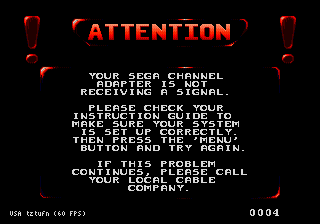 Looking at the overall picture, it is clear that Sega merged the knowledge gleaned from the experience, as well as the success of Catapult’s Xband, and came up with the Saturn Netlink. This evolved into the Dreamcast’s SegaNet, which was essentially copied and improved upon by Microsoft to create Xbox Live, which currently has over a million users.
Looking at the overall picture, it is clear that Sega merged the knowledge gleaned from the experience, as well as the success of Catapult’s Xband, and came up with the Saturn Netlink. This evolved into the Dreamcast’s SegaNet, which was essentially copied and improved upon by Microsoft to create Xbox Live, which currently has over a million users.
It may be disappointing to see something as unique and wonderful as the Sega Channel die so prematurely but it is nice to know that the Genesis was at the forefront of merging consoles with online features and exclusive downloadable content. For that at least, there must be a measure of respect for its place in history.
Sources
- “Game Over for the Sega Channel.” Sega-Saturn.com. November, 24, 1997.
- “Games on Tap.”Sega Visions Magazine. June/July/ 1993.
- Lazzuri Jeff & Gutowski, Stan. “Telecommunication Networks Project 1-SEGA CHANNEL.” fiddle.visc.vt.edu. May 2, 1994.
- “Sega Channel Cited by Popular Science as Among 1994’s Outstanding Products.” Business Wire. Nov. 9, 1994.
- “Stop Just Watching TV.” Sega Visions Magazine. June/July 1994.
- “Study Shows Kids Overwhelmingly Prefer the Sega Channel.” Business Wire. Oct. 17, 1995.
- “Time Warner Interactive’s Primal Rage Pulls in Heavy Hits on Sega Channel.” Business Wire. September 11, 1995.

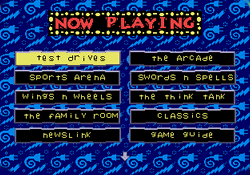
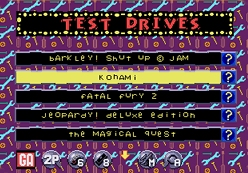
Pingback: The Genesis Mini Game Lineup Now Includes the Rare Mega Man: The Wily Wars | Tiers in Rain